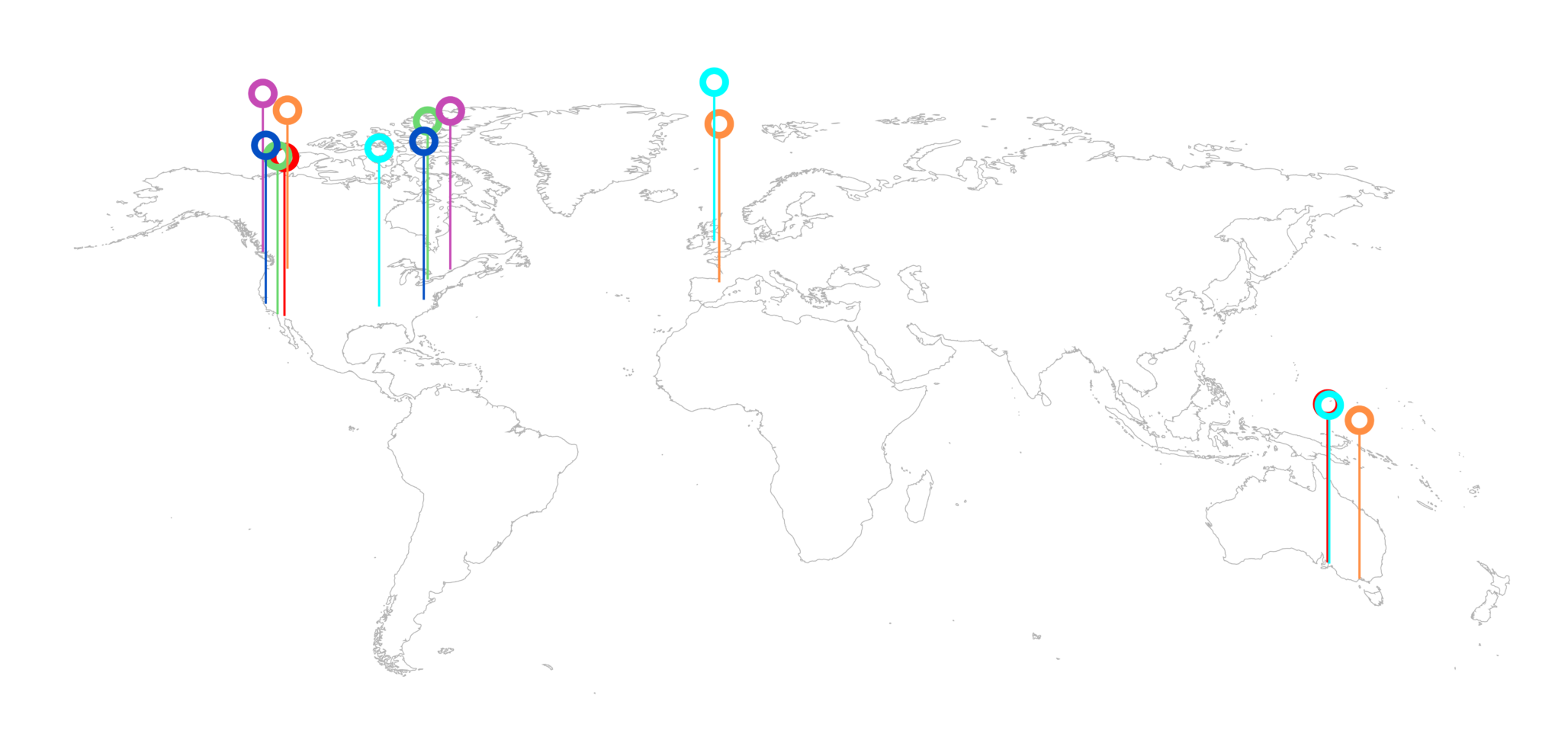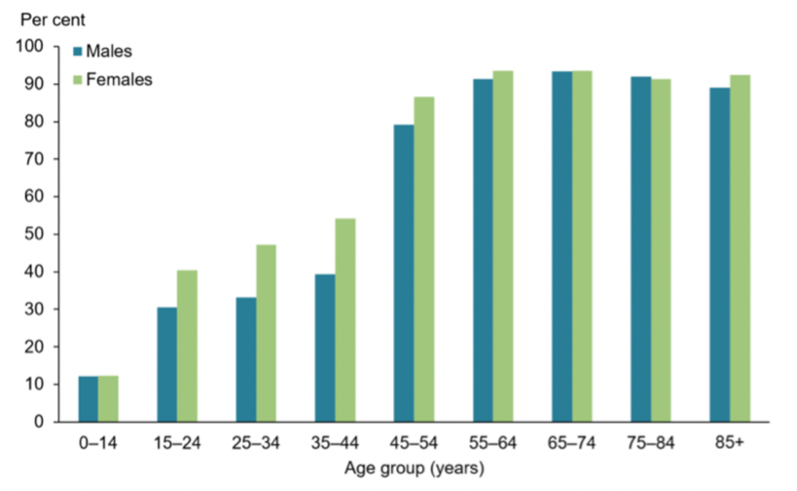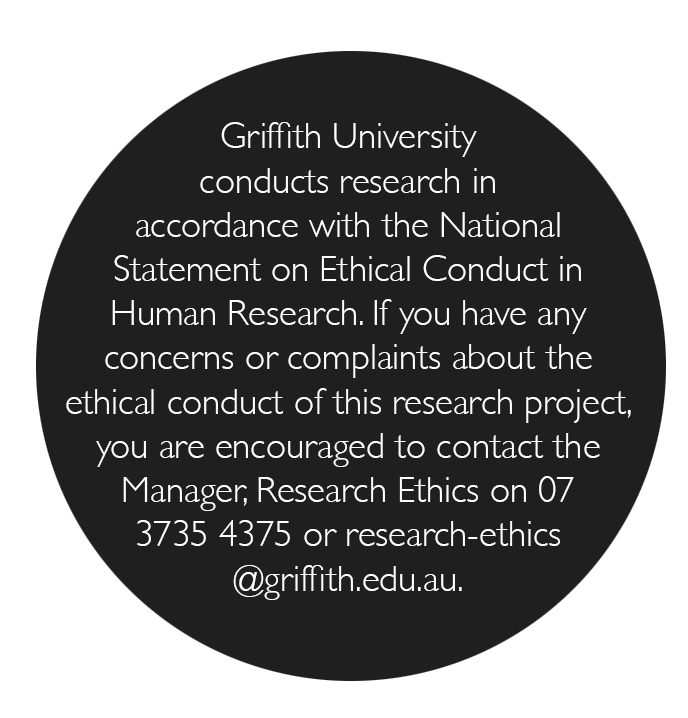We acknowledge the Yugambeh/Kombumerri peoples as the traditional custodians of the land and we extend our respect to all Aboriginal, Torres Strait Islander, and Maori people. We pay our respects to Elders past, present and emerging. They have occupied and cared for these lands and waters for countless generations, and we celebrate their continuing contribution to the life of these regions.
Researchers from:
Queensland College of Art & Design
Ms Victoria Hamilton
she/ they
Phone – +61 (0) 408 723 276
Email – vicky.hamilton@griffithuni.edu.au
learn more
Victoria Hamilton’s practice integrates _ design, art, and architecture. Her practice-based research leads to novel findings and observations through a visually creative experience. Her primary focus is the exploration of Charles Bonnet Syndrome (CBS) visions, where the realm of image intersects with perception.
The research utilises metaphors—illustrating one thing as another—where the ambiguity of one concept causes imaginative links creating clarity for another. This project is working with the CBS community as a team of co-creators. A methodology that presents stories, memories, and narrative.
Currently pursuing a higher degree at Queensland College of Art (QCA) Griffith University. The research title is Form from Field: investigating the relationship between metaphor and image through Charles Bonnet Syndrome. The research is supervised by Prof Andrew Brown, Dr Vincent Moug, and Dr Michelle Douglas and approved by the GUHR Ethics Committee (no. 2022/008).
PhD | QCA, Griffith University | Now | Interactive Design
thesis: Form from Field: investigating the relationship between metaphor and image through Charles Bonnet Syndrome Visions.
BA (Hons 1) | QCA, Griffith University | 2015-9 | 3D Digital Design
thesis: Memory Store: Liminal Perception Interpreted Through the South East Queensland Veranda
BA (Hons 1) | University of Queensland | 2000-7 | Architecture
thesis: The Intuitive/Nonconscious in the creative processes and the architectural experience: precedents of Louis I Kahn & Richard Serra
BA (Hons 1) | Chelsea College of Art and Design | 1995-7 | Spatial Design
thesis: Sensitivity, Balance, and Communication contrasted to Society, Community and Cultural Influences
Prof Andrew Brown
Phone – +61 (0)7 3735 6252
Email – andrew.r.brown@griffith.edu.au
learn more
Professor Andrew Brown is the Program Director of Design and of Digital Arts, Griffith University, Queensland College of Art (QCA). As a principle member of the supervisory team Professor Brown’s expertise is invaluable due to his wealth of knowledge as a researcher and educator. Professor Brown’s activities of creating real-time digital designs from a research focus is an additional layer of knowledge that is applicable to this study. His academic expertise is in technologies that support creativity and learning, modelling creative intelligence, and the aesthetics of computational processes.
This research project benefits from the guidance of such a widely published author, recipient of funded research, active computer musician and computational artist.
Dr Vincent Moug
Phone – +61 (0)7
Email – v.moug@griffith.edu.au
learn more
Dr Vincent Moug is the Major Convenor of 3D Product Design, Griffith University, Queensland College of Art (QCA). Engaged as a principle supervisory team member, Dr Moug’s design approach provides this research with insight towards understanding the impact of the issue. The locus of his research is within socially oriented and responsible design-led innovation. To be applied to this research project within a broader context, is mobility design expertise with a focus on sustainable approaches to problem-solving. Relevant challenges are the accessibility issues and the varying levels of stakeholders. Dr Moug’s design approach is through materiality, prototypes, and extended reality.
With design experience of over 20 years, he has a strong understanding of the nexus between research, methods, and applied design outcomes. Research interests include the co-design of future experiences.
Researcher from:
RMIT University, Australia
The Royal Melbourne Institute of Technology
Dr Michelle Douglas
Email – designandbehave@gmail.com
learn more
Engaged as a supervisory team member, Dr Douglas’ authority on Human Centred Design methods is indispensable to this research. Experience as host and organiser of collaborative design and Maker events will be directly transferrable into the future progress of this proposed design research. Further, relevant to this research is the history of publishing, presenting at conferences, and being an External Examiner to MA Design at the Royal College of Art (2015 – 2018) London.
Dr Douglas is an experienced senior design academic having worked globally at institutions in the UK, (Brunel University, Ravensbourne London, Royal College of Art, University of Salford, Manchester), and the USA (San Francisco State University).
Ethics Summary

Ethics Project Description:
The proposed research will focus on inquiry into how mental perceptions become physical through design. It is important to note this is not medical research. A CBS vision is different from a typical hallucination as the person has ‘insight’: they know what they are seeing is unreal.[1] The term visions is preferred by the CBS community due to the existing stigmas surrounding hallucinations. Of particular interest and explored in this study is the indispensable link between metaphor and image. Metaphors are thought connections essential for both day-to-day life and the night-time dreaming state.[2],[3]
The idea of exploration, as well as respect, beneficence, and empathy are at the base of this research. While CBS is considered a rare diagnosis, it is experienced by 0.4-30% of all people with sight loss.[4] Research to date is primarily conducted by the Ophthalmic, Neurological, and Psychiatric fields and approached with the primary concerns of these medical specialities. Past literature and surveys focused on documenting the content of CBS visions. There is a gap to be filled with research into the context of CBS visions. If this research does not lead to establishing any connection with metaphor, it will provide further feedback for the CBS community and participants.
Research Objectives
CBS individuals sharing their unique visual experiences and interpreting these through a creative design approach is the primary objective. The research aim is to make the condition relatable, to address the stigma of pseudohallucinations, and to raise awareness. Value is represented with focus towards feelings of validation within the CBS community. Primarily this will be expressed with co-designed creative outputs that represent the experience of having a CBS vision. Through design technology the objective is to make the condition broadly understandable for the public.
learn more about ethics methods
Research Methods
A mixture of methodologies is being used for the research: phenomenology, auto-ethnography, and co-designing. Mixed methods allow for exploration from different perspectives. The co-design process introduces designing with others and for others: for a purpose.
Participants three stages:
Online Questionnaire :
A short 10-minute survey
Focus group:
Approximately ten participants selected from the survey to form a focus group and interviews.
Co-design:
Approximately eight participants from the focus group to go on to co-design a CBS installation.
Potential Participants
The participant pool is any individual who has complex pseudohallucinations from sight loss. The CBS Foundation, Australia is happy to assist in promoting the survey through their social media. This will ensure we will be in contact with a population that already have recognition of the syndrome.
Target Participant Group
Questionnaire target group:
- CBS complex visions; <= 15 years
Focus Group target group:
- Descriptive explanation of one or more vision
- Descriptive explanation of accompanying thoughts at time of the vision
Co-design target group:
- CBS complex vision suitable for design application
Identification of potential participants and initial contact method
Questionnaire target group:
- All CBS people invited to complete survey
Focus Group target group:
- The answers from the long-text questions in the survey will identify suitable members for the focus group.
Co-design target group:
- Quality of content and levels of participation in the focus group will identify suitability for the co-design stage of this research.
Screening
Propose three screening questions in the survey.
- First, which area of vision is/was affected?
- Second, which part of the visual pathway caused the sight loss?
- For the third, we propose the target group will be 15 years and older. There is a complex and abstract process required to understand metaphor that grows with development. Executive functioning that allows complex metaphorical comprehension is understood to develop at 15 years and older.[5] A major persisting misconception around CBS is that it is only a condition for the elderly. A Likert scale question to identify age range would be a suitable screening system. The majority of conditions that cause sight loss happen to the population age 45 and above.

Figure 0.1 Prevalence of self-reported eye conditions 2017-2018 [6]
Recruitment method
Online Questionnaire:
- The initial aim was to survey between 30-50 participants.
Focus group:
- From the questionnaire, there was an option to indicate interest in further participation in the research. Recruitment via email correspondence from the research team and an information sheet and consent form was attached to the recruitment email.
Co-Design:
- From the focus group participants were approached to co-design. The analysis of the focus group audio recordings aided in decisions around who to recruit. An information sheet and consent form is provided.
Expected Outputs
At this stage, I would hope the outputs of this project will include the following:
Publication as a journal article (both academic and design)
Design presentation/ exhibition
The co-designers and CBS community will be invited to all design exhibitions and presentations. An aim of the research is validation and having CBS community friends and family view the built works is key. If the participants wish to receive a summary of the key findings from the research it will be prepared and forwarded. The thesis will also be available, upon request. Participants will also be able to request a copy of their own interview transcript.
[1] Dominic ffytche, “Charles Bonnet Syndrome: An Interview with Dr. Dominic Ffytche,” interview by April Cashin Garbutt, 2015, www.news-medical.net/news/20151102/Charles-Bonnet-syndrome-an-interview-with-Dr-Dominic-ffytche.aspx.
[2] James Grant, “What Metaphors Mean,” in Metaphor: Philosophical Issues (Oxford University, 2011), lecture delivered online. https://podcasts.ox.ac.uk/1-what-metaphors-mean.
[3] Josie E. Malinowski and Caroline L. Horton, “Metaphor and Hyperassociativity: The Imagination Mechanisms Behind Emotion Assimilation In Sleep and Dreaming,” Frontiers in psychology 6 (2015),https://doi.org/10.3389/fpsyg.2015.01132.
[4] J. Best et al., “Think Sight Loss, Think Charles Bonnet Syndrome,” Therapeutic Advances in Ophthalmology 11 (Jan-Dec 2019),https://doi.org/10.1177/2515841419895909.
[5] Nuria Carriedo et al., “The development of metaphor comprehension and its relationship with relational verbal reasoning and executive function,” Report, PLoS ONE 11 (2016/03/08 2016): p.15,https://doi.org/ http://dx.doi.org.libraryproxy.griffith.edu.au/10.1371/journal.pone.0150289
[6] Source: ABS 2019a, https://www.aihw.gov.au/reports/eye-health/eye-health/data
Information Sheet: co-creation
GU Ref: No 2022/008
Appendix 06
to access pdf…click here
Consent form: co-creation
GU Ref: No 2022/008
Appendix 08
to access pdf…click here


